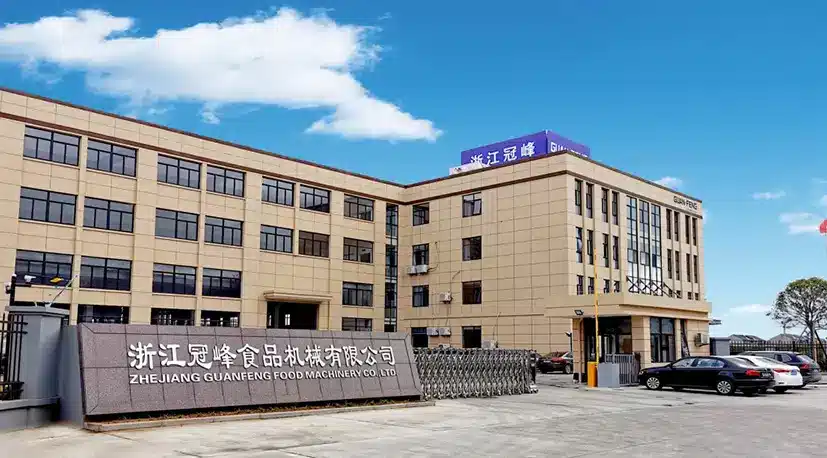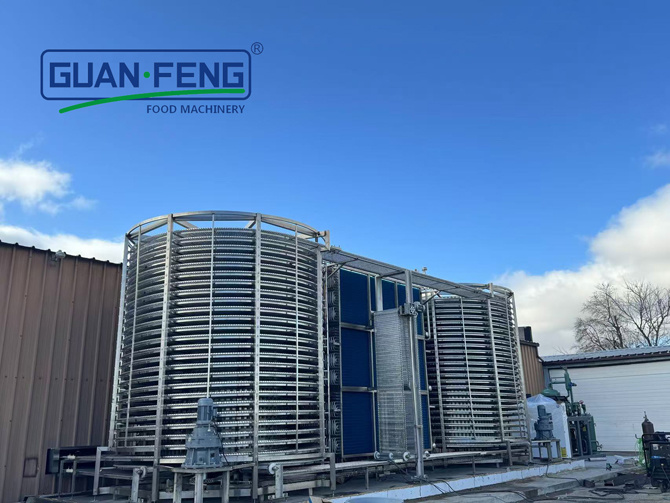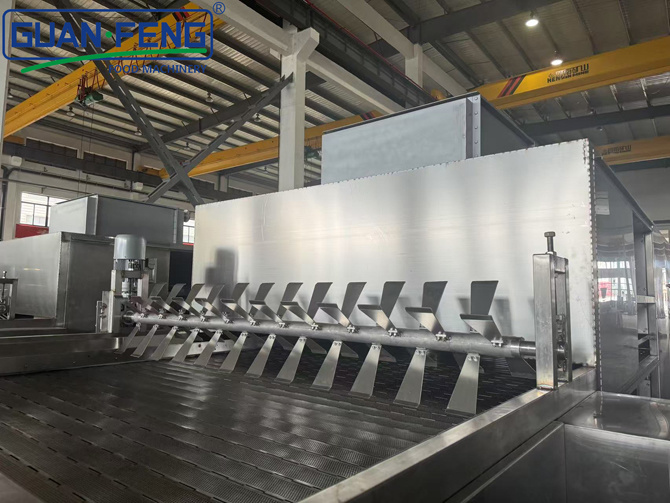BLOG
Focus on hot topics, real-time dynamics
The Science Behind Vegetable Lyophilizers: A Deep Dive into Freeze-Drying Technology
The Science Behind Vegetable Lyophilizers: A Deep Dive into Freeze-Drying Technology
Table of Contents
- 1. Introduction to Vegetable Lyophilizers
- 2. What is Lyophilization?
- 3. How Do Lyophilizers Work?
- 4. Benefits of Vegetable Lyophilization
- 5. Applications of Freeze-Dried Vegetables
- 6. Choosing the Right Lyophilizer for Your Needs
- 7. The Future of Lyophilization Technology
- 8. Frequently Asked Questions
- 9. Conclusion
1. Introduction to Vegetable Lyophilizers
Vegetable lyophilizers, or freeze-dryers, are essential tools in the life sciences and food preservation industries. They utilize the process of lyophilization to remove moisture from vegetables, allowing them to maintain their nutritional value, flavor, and texture. As we dive deeper into this fascinating technology, we will explore how these machines work, their numerous benefits, applications, and future advancements.
2. What is Lyophilization?
Lyophilization is a sophisticated dehydration process that involves three main stages: freezing, primary drying, and secondary drying. This technique is commonly used in the preservation of food, pharmaceuticals, and biological materials.
2.1 The Freeze-Drying Process
During the lyophilization process, the product is first frozen to a temperature below its eutectic point. This step prevents the formation of ice crystals that could damage the cellular structure of the vegetables. Next, the pressure is lowered, allowing sublimation to occur, where ice transitions directly from solid to vapor without becoming liquid. Finally, secondary drying removes any residual moisture, ensuring the product is shelf-stable.
2.2 Importance of Lyophilization in Food Preservation
Lyophilization is crucial for food preservation as it extends shelf life, prevents spoilage, and retains flavor and nutrients. Unlike traditional drying methods, freeze-drying does not compromise the integrity of the food, making it an ideal choice for preserving vegetables.
3. How Do Lyophilizers Work?
Understanding how lyophilizers function is essential for grasping their importance in the preservation process. Here’s a breakdown of the key components and their roles in the lyophilization process.
3.1 Key Components of a Lyophilizer
A lyophilizer consists of several critical parts, including:
- **Freezing Chamber**: This is where the vegetables are frozen.
- **Vacuum System**: Reduces pressure to facilitate sublimation.
- **Heat Exchange System**: Provides heat during the secondary drying phase.
- **Control System**: Monitors and regulates the entire process.
3.2 The Lyophilization Cycle
The cycle typically begins with loading the vegetables into the freezing chamber. Once frozen, the vacuum system is activated, and heat is applied to initiate sublimation. The control system ensures that temperature and pressure are maintained throughout the process, contributing to the efficiency and effectiveness of freeze-drying.
4. Benefits of Vegetable Lyophilization
The advantages of using vegetable lyophilizers extend beyond simple preservation. Here are some key benefits that make lyophilization a preferred method:
4.1 Retention of Nutritional Value
Lyophilization helps retain up to 90% of the original nutrients found in vegetables. This is significantly higher than other drying methods, which can cause nutrient loss due to high temperatures.
4.2 Enhanced Flavor and Aroma
The freeze-drying process preserves the natural flavor and aroma of vegetables, leading to a more appetizing product when rehydrated.
4.3 Long Shelf Life
Freeze-dried vegetables can last for years without refrigeration, making them ideal for long-term storage and emergency preparedness.
4.4 Lightweight and Convenient
The removal of moisture makes freeze-dried vegetables lightweight and convenient for transportation and storage, appealing to both consumers and manufacturers alike.
4.5 Versatility in Culinary Applications
Lyophilized vegetables can be easily rehydrated and used in various dishes, enhancing their versatility in the culinary world.
5. Applications of Freeze-Dried Vegetables
The applications of lyophilized vegetables are vast and varied. Here are some of the most common uses:
5.1 Food Industry
In the food industry, freeze-dried vegetables are increasingly used in ready-to-eat meals, soups, and snacks. They provide convenience without sacrificing quality.
5.2 Emergency Preparedness
Freeze-dried vegetables are a staple in emergency food supplies due to their long shelf life and ease of preparation.
5.3 Pharmaceutical Applications
While primarily focused on food preservation, lyophilization is also used in the pharmaceutical industry to stabilize sensitive biological materials, such as vaccines and enzymes.
5.4 Space Exploration
The space industry utilizes lyophilized foods to provide astronauts with nutritious meals that are lightweight and easy to prepare in a microgravity environment.
6. Choosing the Right Lyophilizer for Your Needs
Selecting a suitable lyophilizer is crucial for achieving effective results. Here are some factors to consider:
6.1 Scale of Operation
Determine whether your needs are small scale (home use) or large scale (industrial applications). This will dictate the capacity and features required.
6.2 Type of Vegetables
Different vegetables may require specific settings or features in a lyophilizer, so consider the types you plan to process.
6.3 Budget Considerations
Lyophilizers can vary significantly in price. Establish a budget that meets your needs while considering potential long-term savings from reduced waste and extended shelf life.
6.4 User-Friendly Features
Look for models with intuitive controls, automatic settings, and reliable customer support to make the process seamless.
7. The Future of Lyophilization Technology
As technology advances, the future of lyophilization looks promising. Innovations in automation, energy efficiency, and improved control systems will likely enhance the effectiveness and accessibility of freeze-drying technology.
7.1 Integration of AI and IoT
The integration of artificial intelligence and the Internet of Things (IoT) into lyophilizers may optimize processes and provide real-time monitoring, improving efficiency and consistency.
7.2 Sustainable Practices
Future developments may also focus on sustainability, including energy-efficient models and the use of renewable resources in manufacturing processes.
8. Frequently Asked Questions
8.1 What types of vegetables can be freeze-dried?
Most vegetables can be freeze-dried, including carrots, peas, corn, and bell peppers. However, starchy vegetables like potatoes may require additional processing.
8.2 How long does the freeze-drying process take?
The process can take anywhere from 24 hours to several days, depending on the type of vegetable and the settings of the lyophilizer.
8.3 Can I freeze-dry vegetables at home?
Yes, home freeze-dryers are available for purchase, making it possible for individuals to process their own vegetables.
8.4 Are freeze-dried vegetables as nutritious as fresh ones?
While freeze-dried vegetables retain most of their nutrients, they may not match the exact nutritional profile of fresh vegetables. However, they can still be a healthy option.
8.5 How should I store freeze-dried vegetables?
Store freeze-dried vegetables in a cool, dark place in airtight containers to maximize shelf life.
9. Conclusion
The science behind vegetable lyophilizers is a remarkable blend of technology and nature, enabling us to preserve the freshness, flavor, and nutritional value of vegetables for extended periods. As industries continue to adopt freeze-drying techniques for various applications, understanding the benefits and workings of lyophilizers becomes increasingly important. Whether for food preservation, pharmaceutical applications, or the future of space exploration, the potential of lyophilization is vast and promising. Through continued innovation and investment in this technology, we can look forward to a future where high-quality, nutritious food is always within reach.
Hot Tags:
Contact Us
E-mail:
sales@syguanfeng.com
Tel:
+86 15088506234
Address:
South Industrial Park of Dongguan, Shangyu District, Shaoxing City,Zhejiang Province,China.
Related Blog
GUANFENG, your customization experts!
GUANFENG FOOD MACHINERY - leading supplier of integrated food processing solutions
Copyright© 2024 ZHEJIANG GUANFENG FOOD MACHINERY CO.,LTD.










